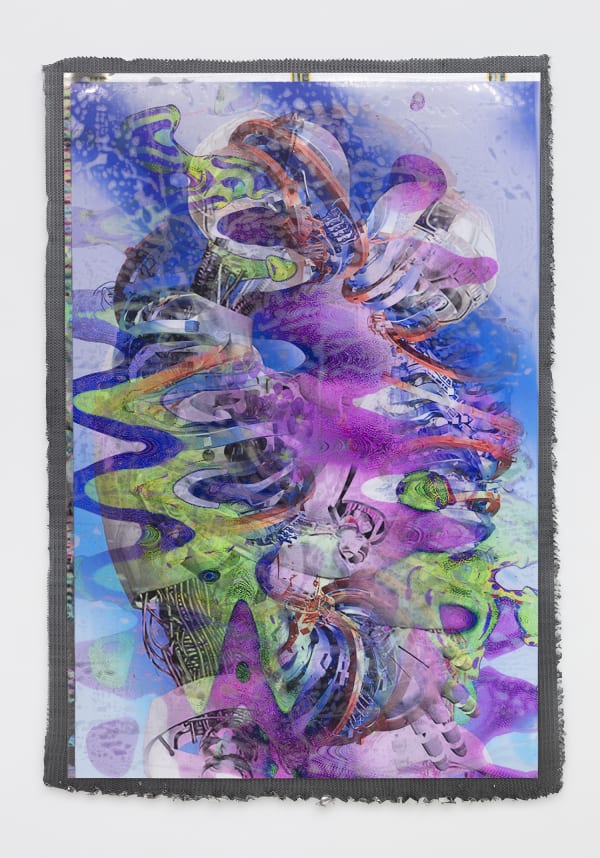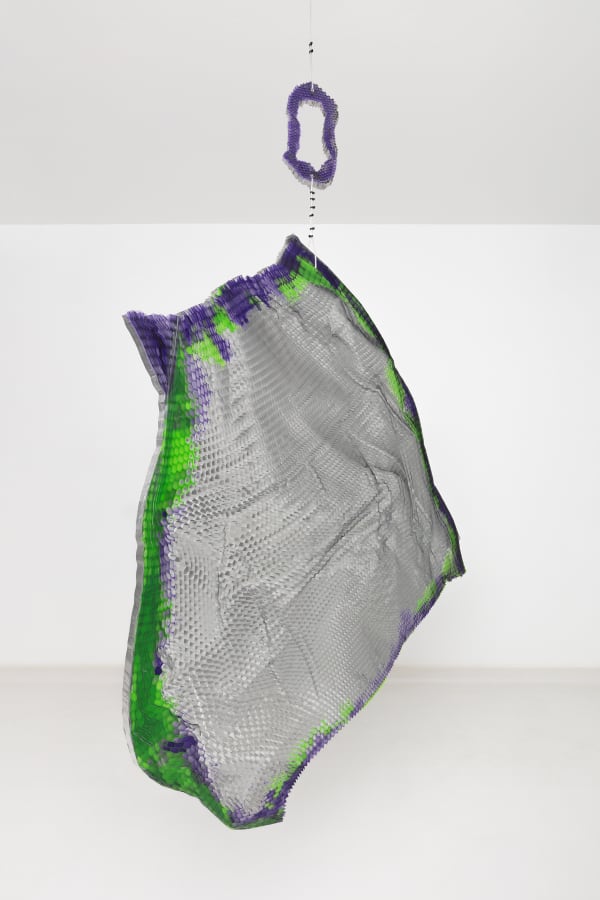u space debris: Estrid Lutz at CFALive Milan
According to a recent study by NASA, 27.000 pieces of space debris are currently orbiting the earth. The large majority of these objects are human-made, but they fly around and mix with non-human-made objects in an unexpected cosmic collision course. Traveling at an average speed of 17.500 miles per hour, this unlikely collection of hyperfast space junk provides us an opportunity to think about a world in which human and non-human objects are no longer distinguishable from one another, merging through the interstellar speed at which it travels.
In her latest exposition for Everyday Gallery (Antwerp) and CFA (Milan), the French artist Estrid Lutz (b. 1989) examines the poetic implications of human-made space debris to imagine a world in which distinctions between human and non-human, or between natural and scientific become virtually meaningless. Taking its inspiration from space junk, but also from all those scientific attempts to recreate the extreme amounts of energy found on the inside of a star (eg. through fusion power generation in a Tokamak reactor), u space debris imaginatively emulates what a world of fusion energy, extreme speed, and extreme heat might look like. Somewhere in between a speculative artistic reflection on the interstellar Anthropocene and an aesthetic reenactment of the iridescent colors that would result from such processes, u space debris envelops the visitor in the simulation of a cosmic environment.
Trained at the École Nationale Supérieure des Beaux-Arts in Paris and the Art Center College of Design in Los Angeles and currently residing in Mexico, the intersection between technosciences, nature, and aesthetics has always been at the forefront of Lutz's artistic practice. As an artist, Lutz is preoccupied with those poetic zones of contact where science or new technologies take their inspiration from organic processes or otherwise enter into a new relationship with the natural world. Her work engages in a speculative aesthetics that allows us to imagine a cosmos where such processes might run their course freely. A world, that is, where the distinction between the natural and the scientific has become irrelevant; a world in which the biomorphic entities we call humans are folded back into the giant pool of nature-technology.
To achieve this effect, Lutz works with materials that are developed for high-tech purposes and that take their inspiration from organic processes. Many of these materials, like kevlar, are thought to be outside the scope of the visual arts and are instead connected to warfare or survival under extreme conditions. By bringing them into the realm of the visual arts in an unexpected and original way, Lutz creates a technopoetic synthesis of organic and crafted materials that is both poetical and critical. It is critical, in the sense that it is a way for Lutz to reconceptualize creativity in a world in which technology and the organic have merged with one another. It is poetic, in the sense that Lutz's reconceptualization works with distinct formal and textural techniques that speak to our visual imagination. For unique textural effects and to intensify this poetic trajectory, Lutz induces chemical reactions by injecting water or air in her works or by burning parts of the work. Although U Space Debris consists of several works that were created separately, they are combined in this show into an encompassing installation that feels almost like a space invasion, an explosive yet immersive environment that reaches beyond what humans can ordinarily grasp or see.
Fascinating in this regard, is that the works on display in u space debris are intrinsically dependent on the position of the viewer. The iridescent colors of Lutz's works change with every step the viewer takes, refracting and diffracting light in new ways and always in a subtle interrelation with each other and the eye of the beholder. These kinds of effects are inspired by complex scientific phenomena like vorticity, space-state modeling, or isosurfaces (surfaces with more than three dimensions), all related to the quantum mechanical insight that our observance of a phenomenon depends on the position that we ourselves take in the space. All of these phenomena are related to (extreme) movement and energy and exemplify the impact of and the instability of natural phenomena. It is precisely this unsettling awareness that Lutz has turned into a cosmic and aesthetic experience in u space debris.
Text by Bram Ieven











